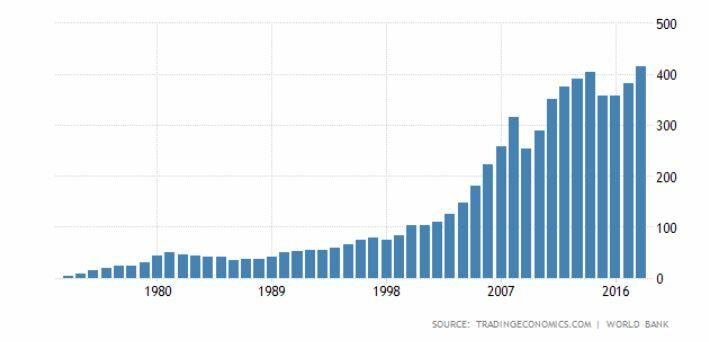Introduction
Today, the main goods and services tend to become more and more similar to each other. As their similarities increase, customers progressively make their choices based on price. The blue ocean strategy is aimed at encouraging companies to break out of the so-called red ocean of competition by creating a new market niche, where they would not face severe rivalry (Blue Ocean Team). Such a strategy suggests refusing to share existing and often diminishing demand with others instead of redirecting their attention to growing demand and avoiding competition. For the United Arab Emirates (UAE), the adoption of the blue ocean strategy is associated with overcoming the restricted environment and acceptance of the possibility of creating a unique market space, where there will be no competitors.
Relevance of Blue Ocean Strategy to the UAE
As the Gulf Region’s most dynamic city, Dubai has developed ambitious growth plans for the next decades. Within the last 35 years, its main economic indicator raised from 50 to more than 400 (Figure 1). The UAE is already the main destination for foreign investment in the Middle East, and it strives to become the smartest city in the world by 2021. It also aims to head the list of the most visited cities by 2025 and turn to the global center of the Islamic economy over the next several years. With such unprecedented growth rates and plans, the implementation of the blue ocean strategy seems to be rather beneficial for the sustainable development of the country.

The concept of value innovation, which integral to the blue ocean strategy implies that equal emphasis is placed on both value and innovation. Value without innovation, as a rule, contracts to the creation of value incrementally – this increases value, but it does not allow standing out from the competition. Innovation without value leads to a passion for technology, market pioneering, or a futuristic focus (Butler, 172). While planning the strategy, the UAE should pay attention to the fact that all this often turns out to be beyond what buyers are willing to accept and what they are willing to pay for. It is important to distinguish value innovation from technological innovation and market pioneering. The study by Butler shows that the winners creating the blue oceans are distinguished from others not by the availability of the most modern technologies and not by the time devoted to the market. Instead, the blue ocean is achieved only when a company combines innovation with aspects such as practicality, price, and cost.
One of the most vivid examples of using the blue ocean strategy in the UAE is related to the Khalifa Sat satellite that was launched by the engineers of the Mohammed Bin Rashid Space Center. This satellite is the first that was manufactured by the given country, and it provides quality images to be used in monitoring and further technology development purposes (“UAE Government!”). A range of more space projects was recently declared by the Center, which means that the UAE has no limits on the path to its ideas, innovation, and the ongoing movement to success. Another example refers to the blue ocean strategy in the context of higher education in the UAE. Bragança states that while the Western style of education is adjusted in this country according to the cultural identity, there is still a place for religious idiosyncrasies, poor disability response, and gender segregation. Therefore, the identified strategy may a viable way to renovate the system of higher education, for example, by making facilities more accessible.
Recommendation
Since the UAE achieved significant success in implementing the blue ocean strategy, it seems to be appropriate to provide a recommendation on preserving a beneficial status of pioneering. In other words, the following suggestion refers to understanding how to keep the ocean blue while other companies enter the new niche, and there is a threat of turning it into the red. It should be stressed that competitors and imitators are not asleep, and the UAE need to be prepared for their appearance, and for the fact that the blue ocean will sooner or later become scarlet. In order not to lose sight of this process, the authors recommend regularly monitoring the value curves (Gündüz 3). If your curve begins to merge with the curves of competitors, then this is a sign that your work efficiency is decreasing, and it’s time to look for ways to create new market spaces. You should always remember that the search for the blue ocean is not a one-time process, but a dynamic one.
Conclusion
To conclude, the blue ocean strategy implies the shift of a focus from market competition to flinging new niches, products, and services that would be demanded by customers. It is revealed that the UAE has already succeeded in adopting this strategy in aerospace, while it is also needed in the sphere of higher education. Concentration on a red ocean means reconciling with the main factors of competition, but a blue ocean presents a lot of benefits. To remain effective, the UAE is recommended to become dynamic and flexible in its decisions and choice of new markets.
Works Cited
Bragança, Ricardo. “Blue Ocean Strategy for Higher Education.” International Association for Development of the Information Society, 2016, pp. 325-328.
Butler, Colin. “Planning with Blue Ocean Strategy in the United Arab Emirates.” Strategic Change, vol. 17, no. 5‐6, 2008, pp. 169-178.
Gündüz, Şafak. “Preventing Blue Ocean from Turning into Red Ocean: A Case Study of a Room Escape Game.” Journal of Human Sciences, vol. 15, no. 1, 2018, pp. 1-7.